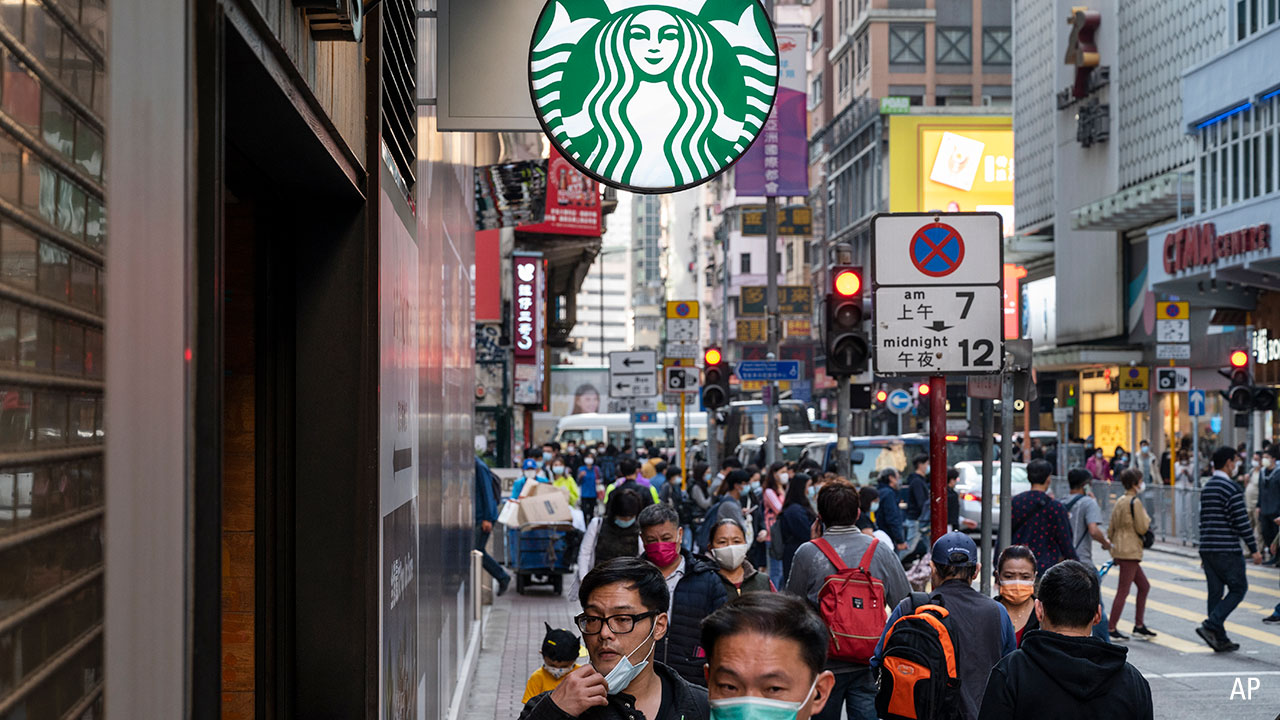Stock in focus: Grande growth for Starbucks
As restrictions ease, we expect a sharp jump in demand.
We believe that Starbucks (SBUX) is poised for a sharp rebound after widespread dine-in restrictions and a shift toward virtual work and schooling resulted in revenue falling 11.3 per cent during fiscal 2020. The company’s efforts to streamline its retail footprint, improve operational efficiency, and invest heavily in digital channels are well placed, and a strong recovery in the Chinese market—with comparable sales up 5 per cent in the fiscal first quarter—points to a quick uptick in demand as restaurants reopen. We recently raised our fair value estimate to US$106 per share from US$100 after digesting first-quarter results, and we assess the shares as fairly valued.
In our view, China remains alluring, with coffee consumption increasing steadily but remaining well below per capita figures seen in the United States and Western Europe. Should the Chinese market bear a similar proportion of cafe concepts at maturity as does North America, we believe that it offers some US$55 billion in upside for market participants, with cafe penetration of 2.7 per cent falling well below the North America equilibrium of 10%–12% of food-service sales, as we calculate it. Starbucks’ strong international portability remains relevant to our growth thesis, as the company strives to create a market for premium espresso beverages in what have historically been tea drinking cultures in Asia-Pacific.
MORE ON THIS TOPIC: Douglass on coronavirus: 'Expect volatility but don't panic'
We model a sharp jump in 2021 same-store sales, up 23.5 per cent in the Americas segment and 28.3 per cent for international stores. However, we note that risks lie to the downside and remain contingent on the timeline of dining room reopenings. Management’s guidance includes the assumption of a return to full dine-in capacity by the end of the March, which we view as unlikely. Nonetheless, we believe that our estimates of US$28.3 billion in revenue and US$2.60 in earnings per share for fiscal 2021 remain realistic, with government stimulus checks and pandemic fatigue likely to catalyze a sharp jump in guest traffic even before a widespread vaccine rollout.
SBUX Price v Morningstar Fair Value | 10 Yr
Source: Morningstar
We believe that Starbucks’ wide economic moat remains intact, with the company’s pricing power, international replicability, attractive unit-level economics, and strong comparable-store sales (on a smaller marketing budget than peers) underpinning the brand intangible asset. Strong growth in average check—up an average of 5.2 per cent per year over the last five years—testifies to the company’s pricing power, growth in the higher-check digital channel, and ability to upsell customers with larger beverages, premium drinks, and food attach items. At US$7.18 per order (based on Morningstar estimates and Euromonitor data), Starbucks handily outpaces peers McDonald’s (MCD) McCafé (US$4.94) and Dunkin’ (US$3.75).
We also assign Starbucks a wide moat rating for a scale-driven cost advantage, with US$23.5 billion in 2020 revenue (and likely much higher systemwide sales, with licensed store revenue unreported) rendering the company the largest coffee chain and one of the four largest restaurants in the world by revenue. With a relatively small basket representing the bulk of its food and paper costs (primarily milks, syrups, cups, and pastry items), we believe that Starbucks is able to centralise purchasing and leverage its scale to earn volume discounts on commoditised food products, giving it a sustainable cost advantage in a fragmented global coffee market.

Starbucks Coffee store and logo on the streets on Hong Kong in February 2021
While the company’s competitive advantages are deeply entrenched, we have elected to lower our moat trend rating to stable from positive, given the quickly evolving and extremely competitive global coffee market. In our view, Starbucks has effectively invested in technologies that support its moat, with recent efforts tailored to improve drive-thru throughput and labor efficiency, including curbside capabilities and AI-driven procurement and scheduling. Given recent industry trends, we increasingly view such expenditures as a cost of doing business rather than an enduring competitive edge. The proliferation of third-party restaurant technology companies supports this view, resulting in the democratisation of such capabilities through "as a service" models that reduce the need for expensive internal development—and limiting the scope of enduring technology-related moats to scale-driven cost advantages and a unique database of customer ordering history.
While consumer preferences for convenience, variety, and value represent a tailwind for the company, wallet pressure from heavy competition (including quick-service restaurant chains, other coffee purveyors, packaged and single-serve coffee in the grocery channel, and the broader energy category) leads us to believe that Starbucks’ brand pricing premium is unlikely to materially change in the near to medium term.
Sean Dunlop is an equity analyst on the consumer team for Morningstar.

